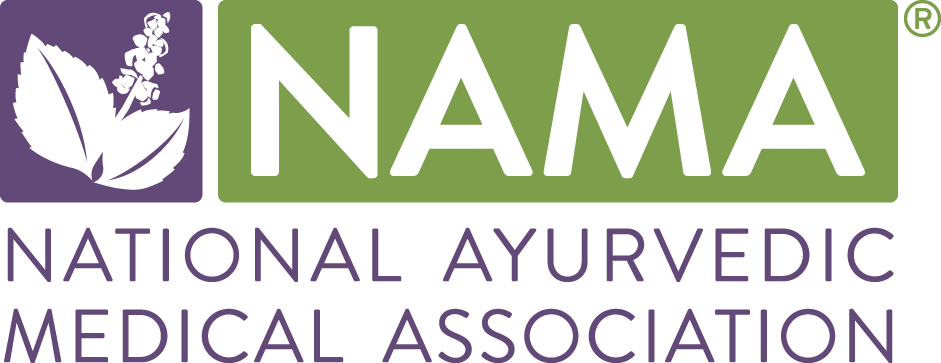Prospective Students FAQs
Q. I WANT TO STUDY TO BECOME AN AYURVEDIC PROFESSIONAL. WHERE DO I START?
We know it’s important for students to attend a reputable school. We recommend studying at a program that is under the purview of the Ayurvedic Accreditation Commission (AAC). AAC-recognized programs have been reviewed and acknowledged as providing professional training.
Q. HOW DO I FIND An AAC-RECOGNIZED AYURVEDA PROGRAM?
Listings of AAC-recognized Ayurvedic Health Counselor, Ayurvedic Practitioner, Ayurvedic Doctor Level Certification, Ayurvedic Vaidya and Ayurvedic Yoga Therapist training programs are provided on AAC’s website. You may gather further information about the programs by contacting the schools directly.
Q. IF I ATTEND A PROGRAM THAT IS NOT AAC-RECOGNIZED, MAY I STILL JOIN NAMA AS A PROFESSIONAL MEMBER AFTER I GRADUATE?
Possibly. Graduates of Ayurveda AHC, AP, and AD training programs that are not AAC-recognized or accredited may currently still apply to sit for the NAMACB board certification exam. Upon passing the exam, you are qualified to apply to become a NAMA Professional Member. Currently, to qualify to sit for the NAMACB exam, your training must meet AAC’s educational standards, the applicant and school must provide the required supporting documentation to verify that these educational standards have been met, and an additional $125 fee must be paid for the detailed review to be conducted.
Visit our Education page to review the educational competencies to qualify to sit for the desired NAMACB exam. NAMA’s Professional Membership application also provides a list of requirements. Regardless of where you complete your training, you must have completed the required number of supervised client encounters and in-person education hours.
Q. ARE accredited ONLINE TRAINING PROGRAMS AVAILABLE?
AAC programs include programs that offer both on-site and online hours. Only programs where students are in person for the required amount of hours will be eligible for the NAMACB exam.
Q. What is the difference between an Ayurvedic Health Counselor and an Ayurvedic Practitioner?
Ayurvedic Health Counselors and Ayurvedic Practitioners both practice preventive health care and health promotion, using diet and lifestyle. However, the Ayurvedic Practitioner is a professional with additional training in pathology and disease management beyond that of the Ayurvedic Health Counselor. Read Scope of Practice for the Ayurvedic Profession for further details.
Q. HOW MUCH DO AYURVEDIC PROGRAMS COST?
Program costs vary by school, program and geographic location. Contact the schools directly to inquire.
Q. WHAT IS THE AVERAGE SALARY OF AN AYURVEDIC HEALTH COUNSELOR, AYURVEDIC PRACTITIONER, AYURVEDIC DOCTOR level certified or ayurvedic vaidya Professionals?
Ayurveda as a profession in the United States as of 2025 is still in its infancy, so professionals in the field are pioneers often entrepreneurs and business owners rather than employees.
Q. WHAT ARE SOME EXAMPLES OF CAREERS THAT PEOPLE GO INTO AFTER COMPLETING AYURVEDA TRAINING?
Most Ayurvedic professionals start full‐time or part‐time practices, educate and train future practitioners, or work as researchers, authors, or product formulators. The possibilities seem endless.
Many Ayurvedic professionals also supplement their Ayurvedic careers with related health professions, such as massage, yoga teaching or health coaching, and various types of consulting. Ayurvedic professionals who are licensed health practitioners, such as medical doctors, nurses, and dietitians, often choose to incorporate their Ayurveda studies into their primary health profession.
Q. WHY SHOULD I BECOME A NAMA STUDENT MEMBER?
Any profession is the product of the historical work of its professional association. What NAMA has been able to accomplish in its 20+ years is due to the thousands of members who chose NAMA membership: more members, more dues, more volunteers, more energy, more support. As a NAMA student member, you will enjoy various member benefits, including access to members‐only communications with the latest updates on the Ayurvedic profession in the U.S., opportunities to volunteer, discounts on Ayurvedic products and NAMA’s Annual Conference, and more!
Learn more and apply for membership.
Q. How do I become a NAMA student member?
Student membership is free and open to students enrolled in a qualifying educational program and are supportive of the mission, purpose and goals of NAMA. Student Membership is free for eligible applicants. Learn more about how to apply here.
Q. I AM A LICENSED HEALTH CARE PROFESSIONAL. DO I NEED TO GRADUATE FROM AN AYURVEDA PROGRAM TO PRACTICE AYURVEDA WITH MY PATIENTS?
While no law prevents you from practicing Ayurveda with your patients, we ask that you only incorporate Ayurveda if you are board certified. As you know from being a licensed professional, board certification is a professional standard of excellence to demonstrate to your patients that you have the minimum education and demonstrated knowledge and experience to practice Ayurveda.
Q. I AM A REGISTERED YOGA TEACHER. DO I NEED TO GRADUATE FROM AN AYURVEDA PROGRAM TO COUNSEL MY STUDENTS ON AYURVEDA? CAN I PRACTICE AYURVEDA WITH MY CLIENTS?
While you may legally practice Ayurveda with your students, we ask that you only incorporate Ayurveda if you are board certified. Board certification is a professional standard of excellence to demonstrate to your students that you have the minimum education, experience, and knowledge to practice Ayurveda.
Q. IF I ATTEND A PROGRAM THAT IS NOT AAC-RECOGNIZED, MAY I STILL JOIN NAMA AS A STUDENT MEMBER?
Yes, as long as your school verifies your enrollment. Apply as a Student Member.

